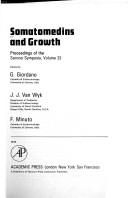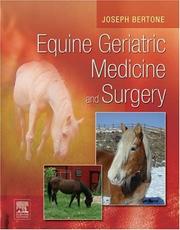| Listing 1 - 10 of 50 | << page >> |
Sort by
|
Book
Year: 2014 Publisher: Washington, D.C., The World Bank,
Abstract | Keywords | Export | Availability | Bookmark
 Loading...
Loading...Choose an application
- Reference Manager
- EndNote
- RefWorks (Direct export to RefWorks)
This paper discusses the theoretical arguments in favor of and against economic globalization and, with a view to ascertaining whether Latin America may be able to capture the globalization upside, examines the trends and salient features of Latin America's globalization as compared with that of Southeast Asia. The paper focuses on trade and financial integration as well as the aggregate demand structures (domestic demand-driven versus external demand-driven) that underpin the globalization process. It finds that Latin America is mitigating some bad side effects of financial globalization by moving toward a safer form of international financial integration and improving its macro-financial policy frameworks. Nonetheless, Latin America's progress in raising the quality of its international trade integration has been scant. The region's commodity-heavy trade structures and relatively poor quality of trade connectivity can hinder growth potential to the extent that they are less conducive to technology and learning spillovers. Moreover, Latin America's domestic demand-driven growth pattern (a reflection of relatively low domestic savings) may become an additional drag to growth by accentuating the risk of a low savings-low external competitiveness trap.
Banks and Banking Reform --- Currencies and Exchange Rates --- Debt Markets --- Economic Development and Growth --- Economic Theory & Research --- Emerging Markets --- Finance and Financial Sector Development --- Financial Integration --- Globalization --- Macroeconomics and Economic Growth --- Private Sector Development --- Trade Integration

ISBN: 0122853504 9780122853500 Year: 1979 Volume: 23 Publisher: London: Academic press,
Abstract | Keywords | Export | Availability | Bookmark
 Loading...
Loading...Choose an application
- Reference Manager
- EndNote
- RefWorks (Direct export to RefWorks)
Animal embryology and growth --- Pathological endocrinology --- Human physiology --- Somatomedin --- Mammals --- Congresses --- Growth --- Somatomedins --- Growth and Development --- Development and Growth --- Developmental Biology --- Insulin Like Growth Factors --- Insulin-Like Growth Factors --- Sulfation Factor --- Factor, Sulfation --- Factors, Insulin-Like Growth --- Growth Factors, Insulin-Like --- Insulin-Like Growth Factor --- Factor, Insulin-Like Growth --- Growth Factor, Insulin-Like --- Insulin Like Growth Factor --- Somatomedin - Congresses --- Mammals - Growth - Congresses

ISBN: 058500353X 9780585003535 0803242220 0803292104 Year: 1992 Publisher: Lincoln University of Nebraska Press
Abstract | Keywords | Export | Availability | Bookmark
 Loading...
Loading...Choose an application
- Reference Manager
- EndNote
- RefWorks (Direct export to RefWorks)
Growth and Development --- Physiological Processes --- Physiological Phenomena --- Phenomena and Processes --- Aging --- Aging, Biological --- Biological Aging --- Senescence --- Mutation Accumulation --- Physiological Concepts --- Physiological Phenomenon --- Physiological Process --- Concept, Physiological --- Concepts, Physiological --- Phenomena, Physiological --- Phenomenas, Physiological --- Phenomenon, Physiological --- Physiological Concept --- Process, Physiological --- Processes, Physiological --- Development and Growth --- Developmental Biology --- Growth and Development. --- Physiological Phenomena. --- Aging.
Book
ISBN: 9781627036429 9781627036436 1627036431 1627036423 Year: 2014 Publisher: Totowa, NJ Humana Press :Imprint: Humana
Abstract | Keywords | Export | Availability | Bookmark
 Loading...
Loading...Choose an application
- Reference Manager
- EndNote
- RefWorks (Direct export to RefWorks)
Plant Cell Morphogenesis: Methods and Protocols provides a collection of experimental techniques used in current research on the cellular aspects of plant morphogenesis.Methods and techniques include contemporary takes on classical light microscopy and histochemistry through automated microscopy applications, use of advanced optical tools, quantitative image analysis, study of cellular dynamics of apical meristems, specialized electron microscopy techniques, and methods used to study specific model plant cell types and protocols for using heterologous expression in yeast to study cell morphogenesis genes. Individual chapters in the highly successful Methods in Molecular Biology series format are written by expert researchers in the field and include introductions to their respective topics, lists of the necessary materials and reagents, step-by-step laboratory protocols, and key tips on troubleshooting and avoiding known pitfalls.
Plant morphology --- Plant cells and tissues --- Growth and Development --- Physiological Processes --- Physiological Phenomena --- Phenomena and Processes --- Morphogenesis --- Botany --- Earth & Environmental Sciences --- Plant Anatomy --- Physiological Concepts --- Physiological Phenomenon --- Physiological Process --- Concept, Physiological --- Concepts, Physiological --- Phenomena, Physiological --- Phenomenas, Physiological --- Phenomenon, Physiological --- Physiological Concept --- Process, Physiological --- Processes, Physiological --- Development and Growth --- Plant tissues --- Morphology (Plants) --- Plants --- Morphology --- Life sciences. --- Plant science. --- Botany. --- Plant physiology. --- Life Sciences. --- Plant Sciences. --- Plant Physiology. --- Physiology --- Botanical science --- Phytobiology --- Phytography --- Phytology --- Plant biology --- Plant science --- Biology --- Natural history --- Biosciences --- Sciences, Life --- Science --- Floristic botany

ISBN: 0121012654 9780121012656 9780121012649 0121012646 9786610630615 1280630612 0080456073 9780080456072 9780080916903 0080916902 Year: 2006 Publisher: Amsterdam Elsevier
Abstract | Keywords | Export | Availability | Bookmark
 Loading...
Loading...Choose an application
- Reference Manager
- EndNote
- RefWorks (Direct export to RefWorks)
The Handbook of the Psychology of Aging, 6e provides a comprehensive summary and evaluation of recent research on the psychological aspects of aging. The 22 chapters are organized into four divisions: Concepts, Theories, and Methods in the Psychology of Aging; Biological and Social Influences on Aging; Behavioral Processes and Aging; and Complex Behavioral Concepts and Processes in Aging. The 6th edition of the Handbook is considerably changed from the previous edition. Half of the chapters are on new topics and the remaining half are on returning subjects that are entire
Aging --- Psychological aspects --- Psychologie --- Gedragspsychologie --- Bejaarden --- Aging. --- Aging - Psychological aspects. --- Aging--Psychological aspects. --- Adult --- Age Groups --- Aged --- Persons --- Named Groups --- Social Sciences --- Psychology --- Growth and Development --- Physiological Processes --- Physiological Phenomena --- Phenomena and Processes --- Aging, Biological --- Biological Aging --- Senescence --- Mutation Accumulation --- Physiological Concepts --- Physiological Phenomenon --- Physiological Process --- Concept, Physiological --- Concepts, Physiological --- Phenomena, Physiological --- Phenomenas, Physiological --- Phenomenon, Physiological --- Physiological Concept --- Process, Physiological --- Processes, Physiological --- Development and Growth --- Developmental Biology --- Person --- Elderly --- Geriatrics --- Longevity --- Age Group --- Group, Age --- Groups, Age --- Adults --- Oudere --- Man --- Gemeenschap --- School --- Buurt --- Volwassene --- Psychological aspects.

ISBN: 0191586935 1280252030 1417592486 9781417592487 0198526245 9780191586934 9781280252037 1383024359 Year: 2004 Publisher: Oxford New York Oxford University Press
Abstract | Keywords | Export | Availability | Bookmark
 Loading...
Loading...Choose an application
- Reference Manager
- EndNote
- RefWorks (Direct export to RefWorks)
The teen years are often portrayed as 'bad news' in the media. Adolescents are shown as moody, rebellious, promiscuous, immature, aggressive and lazy. The author describes the myths that pervade the popular image and goes on to suggest it would help matters if adolescents were given responsibility to match their competence.
Adolescence --- Teenagers --- Adolescent psychology --- Human Development --- Growth and Development --- Behavior and Behavior Mechanisms --- Physiological Processes --- Psychiatry and Psychology --- Physiological Phenomena --- Phenomena and Processes --- Adolescent Development --- Social Welfare & Social Work --- Social Sciences --- Child & Youth Development --- Development, Adolescent --- Adolescent Behavior --- Physiological Concepts --- Physiological Phenomenon --- Physiological Process --- Concept, Physiological --- Concepts, Physiological --- Phenomena, Physiological --- Phenomenas, Physiological --- Phenomenon, Physiological --- Physiological Concept --- Process, Physiological --- Processes, Physiological --- Behavior And Behavior Mechanism --- Development and Growth --- Developmental Biology --- Development, Human --- Humans --- Psychology, Developmental --- Psychology --- Adolescents --- Teen-agers --- Teens --- Young adults (Teenagers) --- Youth --- Teen-age --- Puberty --- Development --- #PBIB:2004.3 --- #PBIB:gift 2004 --- Research. --- Psychological testing. --- Adolescence. --- Adolescent psychology.

ISBN: 0520914937 0585036098 9780520914933 9780585036090 0520086201 Year: 1994 Publisher: Berkeley Los Angeles London
Abstract | Keywords | Export | Availability | Bookmark
 Loading...
Loading...Choose an application
- Reference Manager
- EndNote
- RefWorks (Direct export to RefWorks)
The contrast in the rate of growth between Western and Eastern societies since 1800 has caused Asian societies to be characterized as backward and resistant to change, though until 1600 or so certain Asian states were technologically far in advance of Europe. The Rice Economies, drawing on original source materials, examines patterns of technological and social evolution specific to East-Asian wet-rice economies in order to clarfiy some general historical trends in economic development.
Rice trade --- Agriculture --- Industries --- Business & Economics --- Rice industry --- Grain trade --- Economic aspects --- Asia --- Economic conditions --- E-books --- Rice --- Technological innovations --- Lowland paddy --- Lowland rice --- Oryza sativa --- Paddy (Plant) --- Padi --- Palay --- Oryza --- Agriculture. --- Economic history. --- History, Economic --- Economics --- Farming --- Husbandry --- Industrial arts --- Life sciences --- Food supply --- Land use, Rural --- agricultural economics. --- asian agriculture. --- asian anthropology. --- asian farming methods. --- asian history. --- asian rice agriculture. --- asian rice business. --- asian studies. --- business and economics. --- business development. --- development and growth economics. --- development specialists. --- east asia history. --- east asian economics. --- eastern agriculture. --- economic development. --- economic history. --- economists. --- environment and economy. --- farming methods. --- historians. --- history of rice. --- technology and economy. --- western agriculture.
Book
ISBN: 1283377772 9786613377777 1843318067 9781843318064 9780857286796 085728679X 9781283377775 9781843317807 184331780X 9781843317944 184331794X Year: 2009 Publisher: London Anthem Press
Abstract | Keywords | Export | Availability | Bookmark
 Loading...
Loading...Choose an application
- Reference Manager
- EndNote
- RefWorks (Direct export to RefWorks)
An enlightening look into the medical, cultural, religious and philosophical implications of life extension.
Longevity -- Popular works. --- Longevity -- Religious aspects -- Popular works. --- Self-actualization (Psychology) -- Popular works. --- Aging --- Longevity --- Physiological Phenomena --- Growth and Development --- Phenomena and Processes --- Physiological Processes --- Social Welfare & Social Work --- Social Sciences --- Gerontology --- Physiological Concepts --- Physiological Phenomenon --- Physiological Process --- Concept, Physiological --- Concepts, Physiological --- Phenomena, Physiological --- Phenomenas, Physiological --- Phenomenon, Physiological --- Physiological Concept --- Process, Physiological --- Processes, Physiological --- Life Span --- Lifespan --- Length of Life --- Life Spans --- Lifespans --- Life Expectancy --- Development and Growth --- Developmental Biology --- Aging, Biological --- Biological Aging --- Senescence --- Mutation Accumulation --- Life, Long --- Life extension --- Life span prolongation --- Long life --- Prolongation of life span --- Age --- Health --- Life spans (Biology) --- Old age --- Social aspects --- Moral and ethical aspects --- Social aspects. --- Moral and ethical aspects.

ISBN: 0721601634 9780721601632 Year: 2006 Publisher: [Place of publication not identified] Saunders Elsevier
Abstract | Keywords | Export | Availability | Bookmark
 Loading...
Loading...Choose an application
- Reference Manager
- EndNote
- RefWorks (Direct export to RefWorks)
Equidae --- Animal Diseases --- Health Occupations --- Growth and Development --- Disciplines and Occupations --- Perissodactyla --- Diseases --- Physiological Processes --- Physiological Phenomena --- Mammals --- Vertebrates --- Phenomena and Processes --- Chordata --- Animals --- Eukaryota --- Organisms --- Horse Diseases --- Horses --- Veterinary Medicine --- Aging --- Aging, Biological --- Biological Aging --- Senescence --- Mutation Accumulation --- Medicine, Veterinary --- Animal Husbandry --- Equus caballus --- Equus przewalskii --- Horse, Domestic --- Domestic Horse --- Domestic Horses --- Horse --- Horses, Domestic --- Equine Diseases --- Disease, Equine --- Disease, Horse --- Diseases, Equine --- Diseases, Horse --- Equine Disease --- Horse Disease --- Eucarya --- Eukarya --- Eukaryotes --- Eukaryotas --- Eukaryote --- Animalia --- Animal --- Metazoa --- Chordates --- Chordate --- Vertebrate --- Mammalia --- Mammal --- Physiological Concepts --- Physiological Phenomenon --- Physiological Process --- Concept, Physiological --- Concepts, Physiological --- Phenomena, Physiological --- Phenomenas, Physiological --- Phenomenon, Physiological --- Physiological Concept --- Process, Physiological --- Processes, Physiological --- Perissodactylas --- Development and Growth --- Developmental Biology --- Health Professions --- Health Occupation --- Health Profession --- Profession, Health --- Professions, Health --- Occupations --- Diseases, Animal --- Disease --- Ass --- Equus asinus --- Asses --- Donkeys --- Mules --- Zebras --- Donkey --- Mule --- Zebra --- veterinary --- Horse Diseases. --- Horses. --- Geriatrics --- Disease. --- Physiological Phenomena.

ISBN: 0262134195 0262280329 0585456747 9780262280327 9780585456744 9780262134194 Year: 2003 Publisher: Cambridge, Mass. : MIT Press,
Abstract | Keywords | Export | Availability | Bookmark
 Loading...
Loading...Choose an application
- Reference Manager
- EndNote
- RefWorks (Direct export to RefWorks)
The field of evolutionary biology arose from the desire to understand the origin and diversity of biological forms. In recent years, however, evolutionary genetics, with its focus on the modification and inheritance of presumed genetic programs, has all but overwhelmed other aspects of evolutionary biology. This has led to the neglect of the study of the generative origins of biological form. Drawing on work from developmental biology, paleontology, developmental and population genetics, cancer research, physics, and theoretical biology, this book explores the multiple factors responsible for the origination of biological form. It examines the essential problems of morphological evolution--why, for example, the basic body plans of nearly all metazoans arose within a relatively short time span, why similar morphological design motifs appear in phylogenetically independent lineages, and how new structural elements are added to the body plan of a given phylogenetic lineage. It also examines discordances between genetic and phenotypic change, the physical determinants of morphogenesis, and the role of epigenetic processes in evolution. The book discusses these and other topics within the framework of evolutionary developmental biology, a new research agenda that concerns the interaction of development and evolution in the generation of biological form. By placing epigenetic processes, rather than gene sequence and gene expression changes, at the center of morphological origination, this book points the way to a more comprehensive theory of evolution.
Biological Evolution --- Morphogenesis --- Genetic Processes --- Growth and Development --- Biological Processes --- Biological Phenomena --- Physiological Processes --- Genetic Phenomena --- Phenomena and Processes --- Physiological Phenomena --- Biophysics --- Biology --- Health & Biological Sciences --- Evolution (Biology) --- Morphogenesis. --- Evolution (Biology). --- Physiological Concepts --- Physiological Phenomenon --- Physiological Process --- Concept, Physiological --- Concepts, Physiological --- Phenomena, Physiological --- Phenomenas, Physiological --- Phenomenon, Physiological --- Physiological Concept --- Process, Physiological --- Processes, Physiological --- Genetic Concepts --- Genetic Phenomenon --- Genetic Process --- Concept, Genetic --- Concepts, Genetic --- Genetic Concept --- Phenomena, Genetic --- Phenomenon, Genetic --- Process, Genetic --- Processes, Genetic --- Biologic Phenomena --- Biological Phenomenon --- Biological Process --- Phenomena, Biological --- Phenomena, Biologic --- Phenomenon, Biological --- Process, Biological --- Processes, Biological --- Development and Growth --- Evolution, Biological --- Molecular Biology --- Developmental Biology --- Epigenesis, Genetic --- Sociobiology --- BIOMEDICAL SCIENCES/General --- BIOMEDICAL SCIENCES/Evolution --- Animal evolution --- Animals --- Biological evolution --- Darwinism --- Evolutionary biology --- Evolutionary science --- Origin of species --- Evolution --- Biological fitness --- Homoplasy --- Natural selection --- Phylogeny --- Morphogeny --- Organogenesis --- Embryology --- Morphology
| Listing 1 - 10 of 50 | << page >> |
Sort by
|

 Search
Search Feedback
Feedback About UniCat
About UniCat  Help
Help News
News